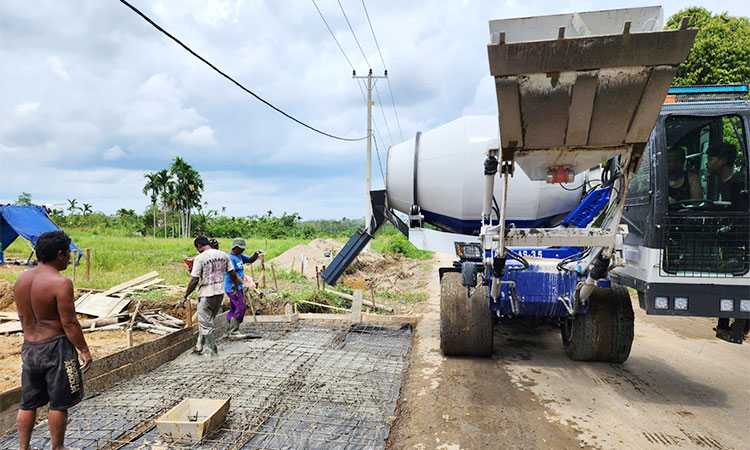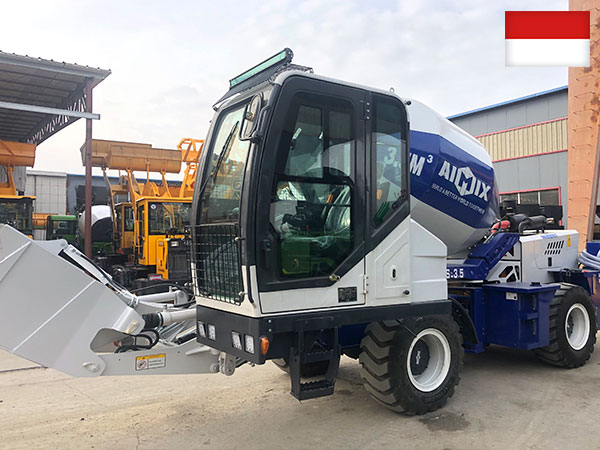Self-loading concrete mixers are versatile and efficient equipment used in construction projects for mixing and transporting concrete. While these machines offer convenience and productivity, ensuring safety during their operation is paramount to prevent accidents and injuries.
Pre-Operational Checks and Inspections
Before operating a self-loading concrete mixer, conduct thorough pre-operational checks and inspections to ensure that the self loading mixer concrete is in safe working condition. Inspect mechanical components, hydraulic systems, electrical wiring, and safety features for signs of damage, wear, or malfunction. Verify that all controls, emergency stop buttons, and safety interlocks are functional and accessible. Any issues or abnormalities should be addressed promptly by qualified personnel before proceeding with the operation.

Operator Training and Certification
Ensure that operators receive comprehensive training and certification on the safe operation of self loading mixer machines. Training programs should cover equipment familiarization, operational procedures, safety protocols, emergency response, and maintenance practices. Operators should be knowledgeable about load capacities, stability considerations, and safe operating practices to prevent accidents and minimize risks during operation. Regular refresher training sessions and competency assessments are essential to maintain operator proficiency and awareness of safety best practices.
Personal Protective Equipment (PPE)
Operators and personnel working in the vicinity of self-loading concrete mixers must wear appropriate personal protective equipment (PPE) to mitigate the risk of injury. PPE may include safety helmets, high-visibility vests, steel-toed boots, gloves, and hearing protection. Additionally, operators should wear seat belts while operating the mixer to prevent ejection in the event of sudden stops or accidents. Providing and enforcing the use of PPE is essential to safeguard personnel and minimize the severity of injuries in the event of an incident.

Load Limitations and Stability Considerations
Adhere to load limitations and stability considerations when operating self-loading concrete mixers to prevent tip-overs and rollover accidents. Avoid overloading the mixer beyond its rated capacity, and distribute the load evenly to maintain stability during transport and mixing. Exercise caution when operating on uneven terrain, slopes, or soft ground conditions, as these factors can affect the mixer’s stability and increase the risk of accidents. Always follow manufacturer recommendations and guidelines regarding load capacities and operational limits to ensure safe operation.
Safe Loading and Unloading Practices
Practice safe loading and unloading procedures to minimize the risk of injuries and accidents during material handling operations. Use designated loading areas equipped with appropriate ramps, chutes, and barriers to facilitate the safe loading of aggregates, cement, and water into the self loading mobile concrete mixers. Ensure that personnel maintain a safe distance from moving parts and rotating drums during loading and unloading operations to prevent entanglement or crush injuries. Implement traffic management measures to control the flow of vehicles and personnel around the mixer to avoid collisions and accidents.
Emergency Preparedness and Response
Establish emergency preparedness and response protocols to address potential hazards and unforeseen incidents during the operation of self-loading concrete mixers. Equip the mixer with emergency stop switches, fire extinguishers, first aid kits, and communication devices to facilitate prompt response to emergencies. Designate trained personnel to oversee emergency procedures and evacuation protocols in the event of accidents, spills, or equipment malfunctions. Conduct regular drills and simulations to test emergency response capabilities and ensure that personnel are prepared to handle emergencies effectively.
Conclusion
Safety management precautions are essential to protect personnel, prevent accidents, and ensure the safe operation of self loading concrete mixer with pumps in construction projects. By implementing pre-operational checks and inspections, providing comprehensive operator training, enforcing the use of personal protective equipment, adhering to load limitations and stability considerations, practicing safe loading and unloading procedures, and establishing emergency preparedness and response protocols, construction companies can mitigate risks and create a safer work environment for their employees. Prioritizing safety is not only a legal and ethical obligation but also a fundamental aspect of responsible construction practices that foster a culture of safety and well-being in the workplace.